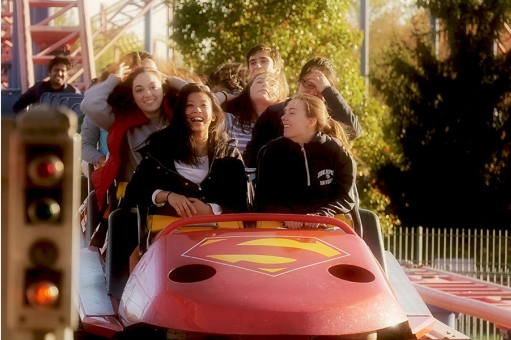Getting out of the classroom and into the real world sometimes can be the best way to learn.
At Johns Hopkins University, first-year biomedical engineering students recently headed to Six Flags America to measure how the acceleration of an amusement park ride can impact an individual’s heart rate.
Wearing gadgets called Simultaneous Heart Rate and Acceleration Recording Devices, or SHARDs, students climbed aboard various amusement park rides to measure heart rate, acceleration, and blood flow as they experienced twists, turns, and free-fall drops.
“The Six Flags trip provides students a unique opportunity to perform experiments on their baroreceptors, which are pressure receptors in the neck that help us maintain our blood pressure,” says Eileen Haase, the Department of Biomedical Engineering undergraduate program director and an associate teaching professor who attends the field trip each year.
The Six Flags trip, dubbed the “roller coaster experiment,” is the highlight of the department’s Freshman Modeling and Design course, taken by every first-year BME student. It is one of five hands-on projects completed during the semester. Another includes the recent Ping-Pong challenge, in which students were given foam core, rubber bands, wooden dowels, glue, and six hours to create devices designed to transport Ping-Pong balls three meters.
At Six Flags, students spent the day learning about the importance of obtaining multiple data points and comparing data to a realistic control. One ride that resulted in a significant change in heart rate was the VooDoo Drop, which sends riders plummeting to the ground in a 14-story free fall.
“This has always been one of the major fall team-building activities for our freshman,” Haase says. “It’s an event that many of the upperclassmen lab managers and design team members come back to participate in as well.”

